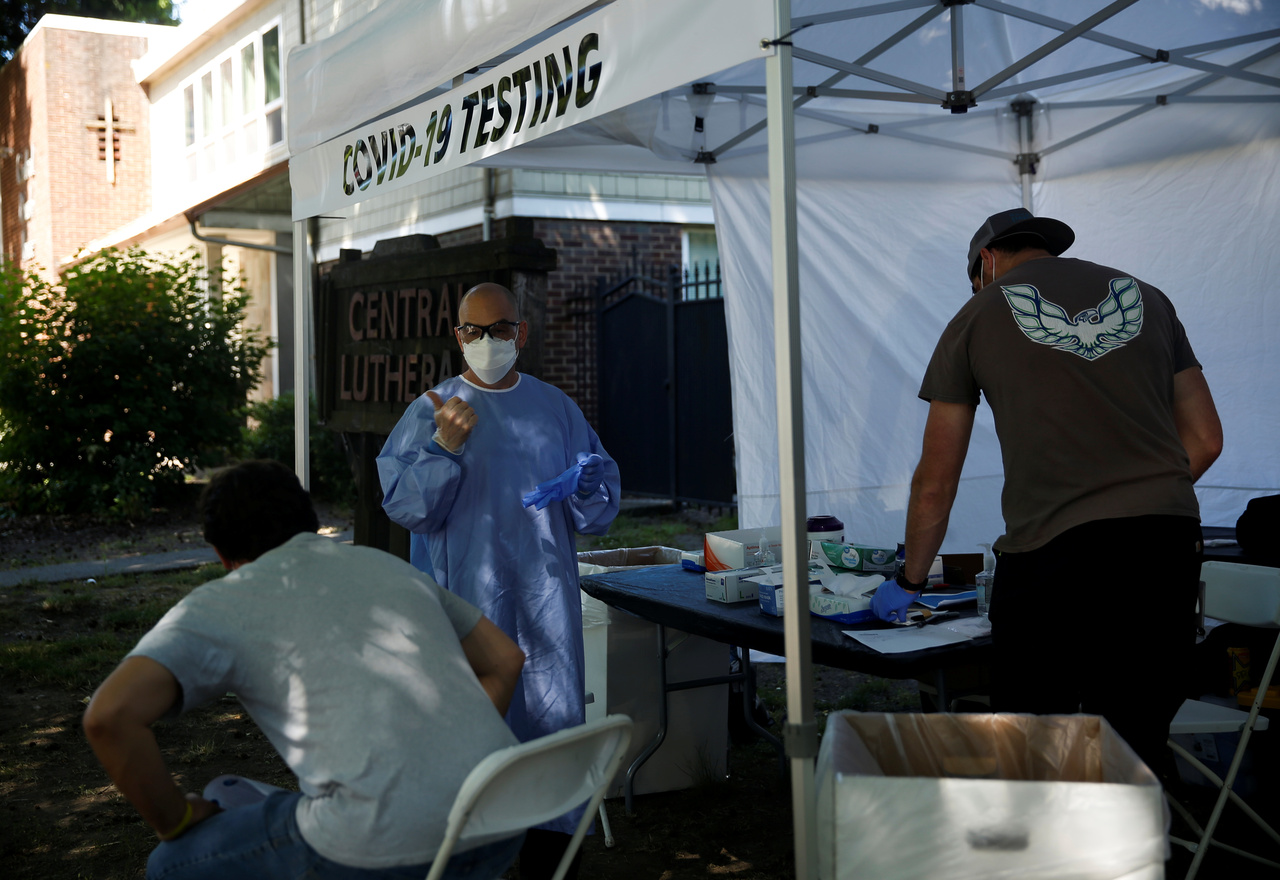News analysis
Why Covid-19 deaths are down but case numbers are up in America
Sign up now: Get ST's newsletters delivered to your inbox

Just because death rates are lower now does not mean the coronavirus crisis is getting better.
PHOTO: REUTERS
Follow topic:
WASHINGTON - The United States reported a fresh daily record of at least 39,000 new coronavirus cases on Thursday (June 25) and rising infections and hospitalisations have forced Texas to put its reopening on hold.
Yet, despite signs of the deepening public health crisis in America's South and West, President Donald Trump on the same day tweeted: "The number of ChinaVirus cases goes up, because of GREAT TESTING, while the number of deaths (mortality rate), goes way down. The Fake News doesn't like telling you that!"
Why the disconnect between low death rates and high case counts? And what does it mean?
The President is correct that America's number of deaths has gone down - around 600 Americans a day are dying from the coronavirus now, down from the mid-April peak of 2,200.
Some of this can be attributed to a rising proportion of patients being younger people who are more likely to survive the virus, and better medical treatment of patients.
"Doctors have gotten a lot more astute about how to treat Covid. So we will see death rates come down," American Enterprise Institute (AEI) senior fellow Scott Gottlieb, the former commissioner of the Food and Drug Administration, told CNBC on Wednesday.
But just because death rates are lower now does not mean the coronavirus crisis is getting better. Experts from the President's own party and administration have debunked his rosy take, pointing out that most Covid-19 patients die after weeks of being ill, which makes daily death tolls a snapshot of where the country stood weeks ago.
"Deaths always lag considerably behind cases," said top infectious diseases expert Anthony Fauci at a coronavirus hearing on Tuesday (June 23). He pointed to how New York, during the worst of its coronavirus crisis, saw deaths rising as cases fell.
"The deaths only came down multiple weeks later. You're seeing more cases now while the deaths are going down. The concern is, if those cases then infect people who wind up getting sick and going to the hospital, it is conceivable you may see the deaths going up," said Dr Fauci.
America has increased its testing to 500,000 to 600,000 a day, but experts say this does not fully explain the spike in cases.
Ohio's Republican governor Mike DeWine, whose state reported 892 new cases on Thursday compared to Wednesday's 632, wrote on Twitter: "We have increased testing, but we do not believe this increase in cases is completely due to testing. Hospitalisations are also up."
Discussing the uptick in cases on the Ohio Channel, University of Cincinnati Health president Richard Lofgren said on Thursday: "The increase isn't just because we're doing more tests. There is an increased spread of Covid-19 in our communities."
"Week over week, testing is up in states experiencing the largest epidemic spread of Covid, but new Covid cases are up to a greater degree," said AEI's Dr Gottlieb, who analysed seven-day rolling averages of new cases and testing data from The Atlantic's Covid Tracking Project.
The analysis showed that America did 4 per cent more tests this week compared to the week before, but reported 32 per cent more confirmed cases. Arizona, California and Texas, which all reported record single-day increases in cases this week, had similarly disproportionate results. Worst of all was Florida, which saw confirmed cases jump by 56 per cent despite a 11 per cent decline in testing.
Experts and public health officials are also worried by rising coronavirus hospitalisations and the proportion of tests that come back positive in states where cases are surging, indicating that the virus is spreading wider in the community.
In Texas, 4,739 Covid-19 patients are currently hospitalised compared to 2,974 patients a week ago. Arizona had 2,453 hospitalised Covid-19 patients as of last count, up from 1,667 the week before.
Another factor could also push up the death toll: younger Covid-19 patients who may spread the virus to more vulnerable people, who are more likely to die if they fall seriously ill.
"With younger age of recent infections in at least some places such as Florida, expect a lower death rate in this wave...until the 20-40 year olds who are infected today go on to infect others," said former Centers for Disease Control and Prevention director Tom Frieden on Twitter.

